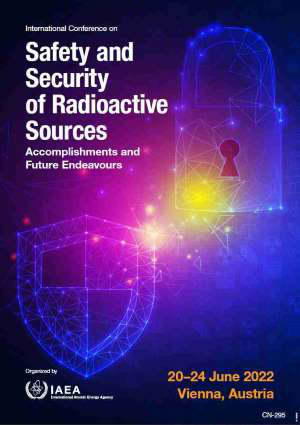Speaker
Description
Inspection of facilities and activities with radiation sources is one of the core functions of a regulatory body (RB) as given in IAEA GSR Part 1 and 3 as well as GSG-13. Inspections are one of the most visible activities of RB and RB stakeholders often build their trust on outcome of inspections. Experiences from several IAEA missions revel that although other core functions, e.g. authorization, pose a challenge, inspection process poses a specific challenge.
There is no particular education for radiation safety inspectors and RBs try to cope with this lack by recruitment of persons with technical background, e.g. physicist and other engineers, very often with MSc and PhDs. Training of recruited staff follows. IAEA SSG-44 addresses the issue.
Even in countries where an inspection program is conducted for decades, this program might be challenged, e.g. when a new radiation related technology is introduced such as industrial irradiators and recruitment of inspectors with an appropriate technical background is difficult. As facilities and activities are becoming more complex, the safety standards are becoming more complex. Therefore, it is highly advisable that inspectors are specialised when inspecting high risk activities, e.g. some inspectors are dedicated to radiotherapy and other to industrial radiography.
It is important to note that an inspector shall not have only good understanding of technology related to radiation sources and radiation protection but he or she must link this knowledge with legal requirements which are country specific. Two examples are given, e.g. definition of a controlled area might be country specific and while in one country inspection report is made public in other country its distribution might be restricted. Regarding safety and security, countries also apply different arrangements, e.g. several regulatory authorities might be involved in such arrangements. Therefore, an inspector should have understanding of inspector’s rights and obligations as well as understanding of an overall country specific regulatory framework.
Technical complexity of facilities and activities and extensive legislation contribute to complexity of inspections. This challenge can be overcome by systematic approach to building inspection program which includes at least:
1. Country specific Annual Inspection Programme based on graded approach as given in IAEA TECDOC-1526.
2. Strong cooperation of inspection and authorization units in particular during preparation of an inspection.
3. Briefing an inspector or inspector’s team before going on site about specific goals of an inspections and methods to be used as well as briefing about enforcement steps to be taken when coming back to the office.
4. Cooperation with other experts accompanying an inspector, e.g. experts from TSOs as noted in IAEA TECDOC-1835.
5. Implementation of inspection campaigns allowing inspectors to gain experience in a specific area, e.g. industrial radiography and nuclear gauges.
6. Preparation of procedures with technical guidance how to conduct regular and reactive on-site inspections of specific activity with radiation sources, e.g. visual observations and measurements, as well as prioritization of observations.
7. Preparation of procedure related to enforcement, follow-up activities and involvement of legal advisers.
8. Manging documentation related to inspection and enforcement.
9. Mentoring of newcomers withing specific training programme including the use of video materials related to specific facilities and activities with radiation sources.
10. Implementation of positive and negative feedback from inspections to all core processes.
The inspection process shall be documented as one of core processes in integrated management system of a regulatory body. The areas mentioned above shall to be addressed in one or several procedures as appropriate. Only systematic approach to inspection programme addressing at least areas mentioned above is going to enhance the implementation of safety standards related to inspections in a country.
| Country OR Intl. Organization | Slovenija |
|---|

